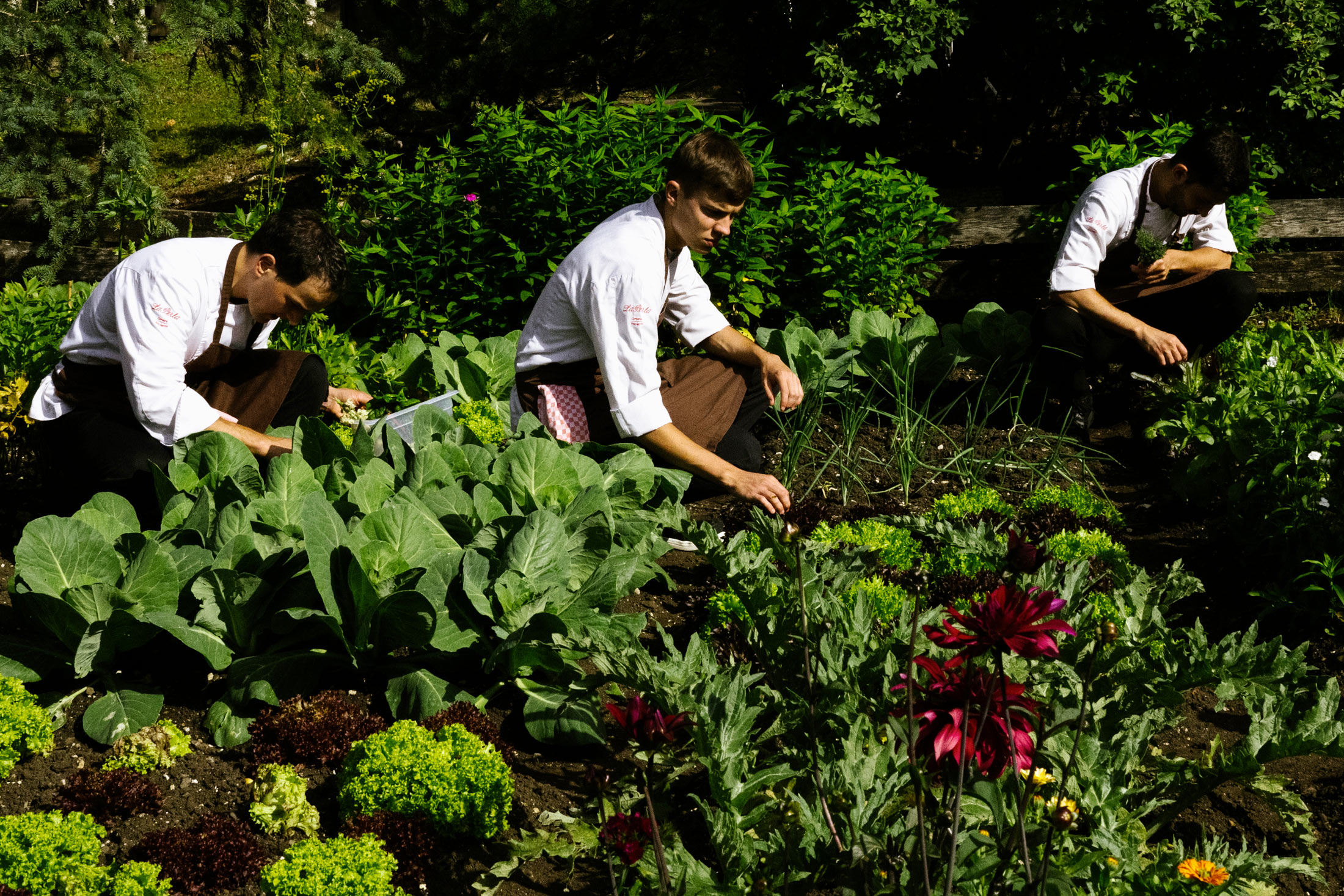Philosophy
The Earth is Alive
From the awareness that everything originates from the earth comes "The Earth is Alive, "the motto of Simone Cantafio's cuisine. It was inspired by the Marquis Incisa della Rocchetta and honors a land too often mistreated by invasive methods, pesticides, monocultures for mass production, but certainly not for quality. If we are what we eat, then "quality" is the key word to guide everything.
Those who choose to give life to raw materials born from life itself, not from machines, distance themselves from the idea of quantity and product industrialization aimed solely at increasing profit. Instead, they seek wealth and value in a dimension tailored to human beings and nature.
Simone Cantafio chose a motto that intrinsically leads us back to the origins of cooking—whether gourmet or simple home cooking: the earth. The earth from which everything is born, the true protagonist of Simone's cuisine.
The Thought
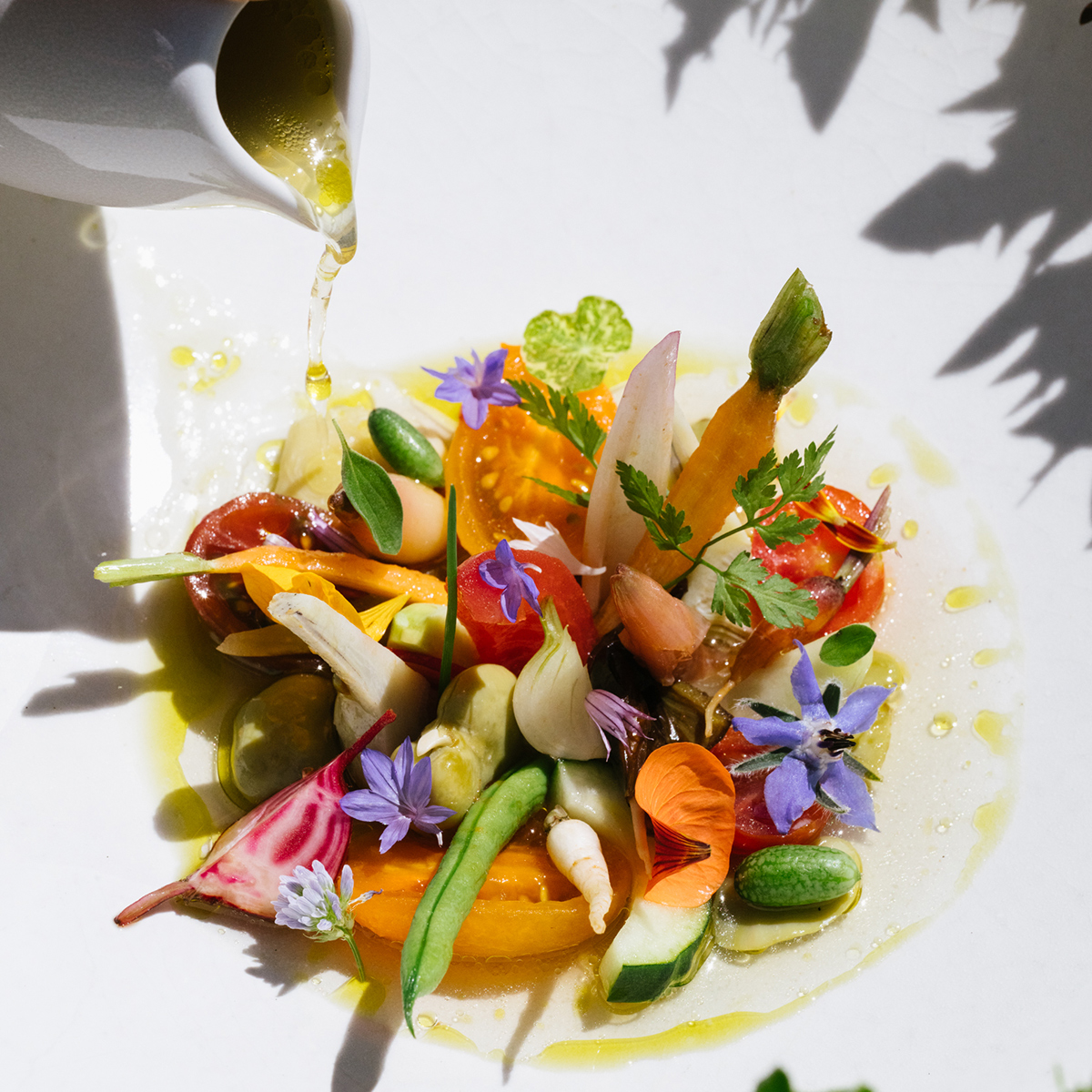

The Thought
Everything is born in my mind. I close my eyes and let my thoughts dance freely. This is the most intense moment for me—when the road of creativity opens before my eyes like a vast territory to explore.
At La Stüa de Michil, we do not serve lobster, but eel. We do not serve Ribeye steak, but lamb from Val Venosta. The choice of products follows the seasons: in winter, we use mostly tubers, cabbages, and winter vegetables, while in summer, the selection is more varied, as the season dictates. A fundamental principle is not to force nature according to our needs, but to adapt our needs to what nature has to offer. Naturally, this requires extra effort—in creativity and preparation time—but the satisfaction of cooking to the rhythm of the seasons and facing the challenges posed by a lean season like winter, reviving ancient cooking and preparation methods, is truly rewarding. The shorter the journey of the products, the higher their sustainability in terms of transport and ecology, but also the greater the product's transparency—because I can go, see, touch, and know firsthand.
Every dish is accompanied by its story, with the person who produced the raw materials as its protagonist. Dishes are guardians: of history, of flavors, of a time that is born with them and carries them to become what they are.
INCÖ

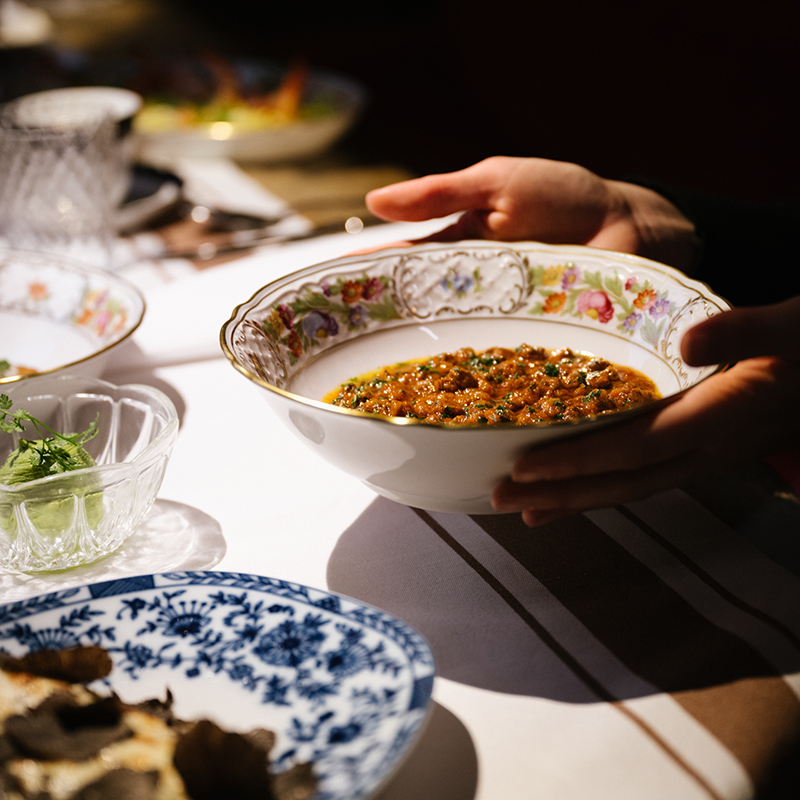
The pop-up table dedicated to the here and now
Simone Cantafio has introduced the "Incö" table at La Stüa de Michil, which means "today" in Ladin — a rustic table in a secluded room, where only the ingredients available day by day are served. The "Incö" menu is constantly changing according to the days and seasons, inviting guests to sit together, share dishes, and appreciate the gifts of the earth and the joy of communal dining.
With "Incö, "Simone highlights products that are too often overlooked: from the simple onion to snails, from black salsify to marrow, from sheep to lamb, from octopus to eel. In addition to serving simple yet refined dishes, the goal of "Incö" is also to raise guests' awareness of more sustainable cuisine — far from extravagance and excess, and closer to the earth and those who cultivate it.

Th oughts
Dishes are guardians:
of history, of flavors, 
 of a time that is born with them and shapes them into what they are.
of a time that is born with them and shapes them into what they are.
Simone Cantafio
Suppliers
Suppliers
Learning, Knowing, Building
Simone Cantafio is meticulous in choosing his suppliers, always engaged in deeply human work to which he dedicates much of his time, especially during the restaurant's closing months — from April to June and from September to December. During these periods, he travels across Alto Adige-Südtirol and Italy to meet, get to know, and build personal relationships — often blossoming into friendships — with those who provide him with raw materials.
Like Günther, the "hermit of agriculture" in Val di Funes, who raises his "Brillenschaf" sheep, or Harald, who grows carrots, herbs, and roots on his 800 square meters of land in Barbiano, or Alois and Lucia, who wet their hands with the milk of their few cows to produce "Graukäse," the gray cheese of San Vigilio di Marebbe.
Between the suppliers and La Stüa de Michil, a mutual empowerment of inspiration, ideas, and innovation is taking shape.
Gardens Foraging
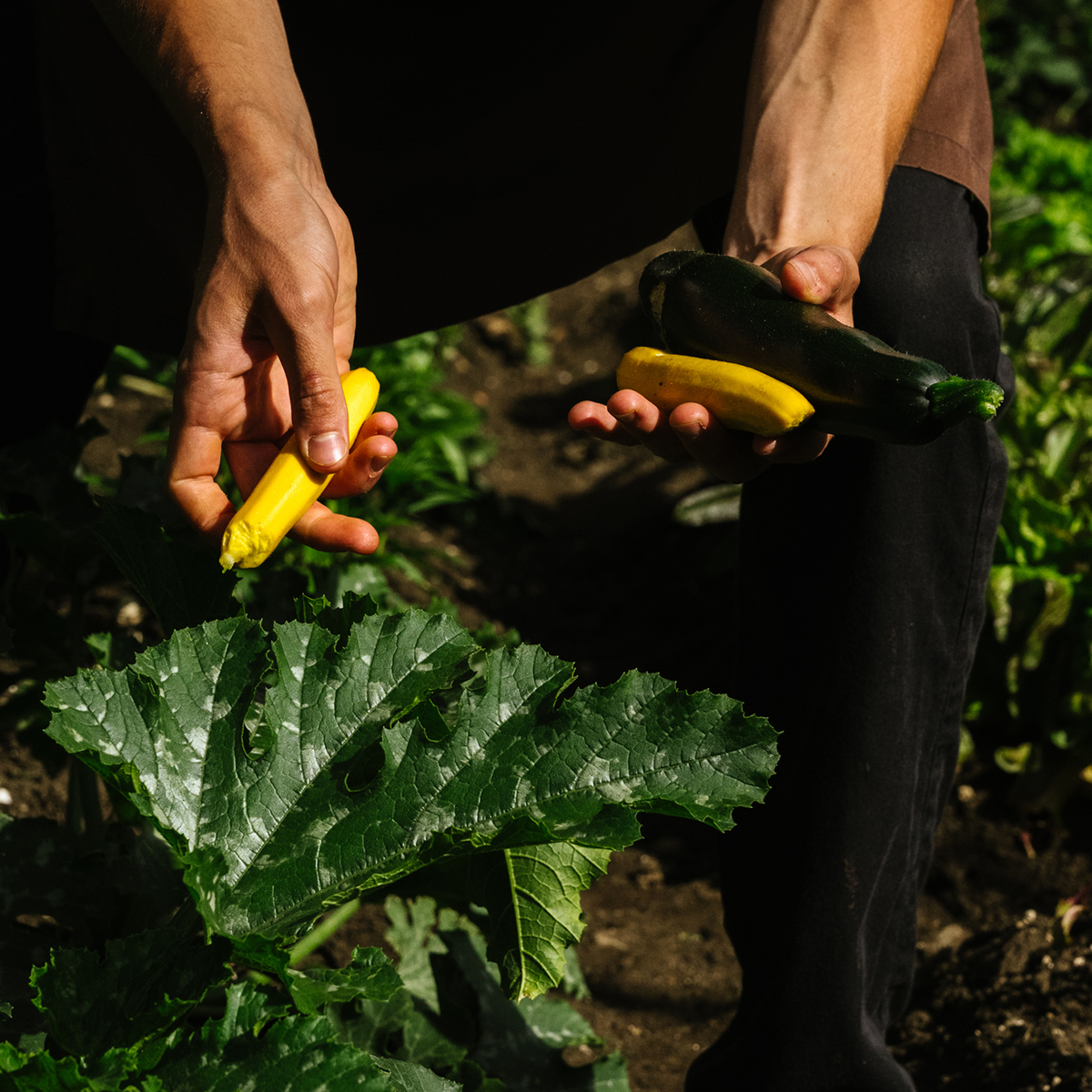

Thanks to Simone's interest, the gardens have taken a big step forward in diversifying their offerings, breaking free from the classic potatoes and onions that once dominated. This year, for example, Georg has stopped using plastic to cover the vegetables in his garden, opting instead for sheep's wool. One thing leads to another — from inspiration comes action.
Another precious source of raw materials is foraging: Lorenzo and Karin, two local experts who have dedicated their lives to nature, help us gather wild herbs. Oxalis, wild garlic, thyme, wood sorrel, mushrooms, yarrow, garlic flowers, and watercress are just some of the herbs that come directly from the meadows and forests of the Dolomites from April to September.
In cantina
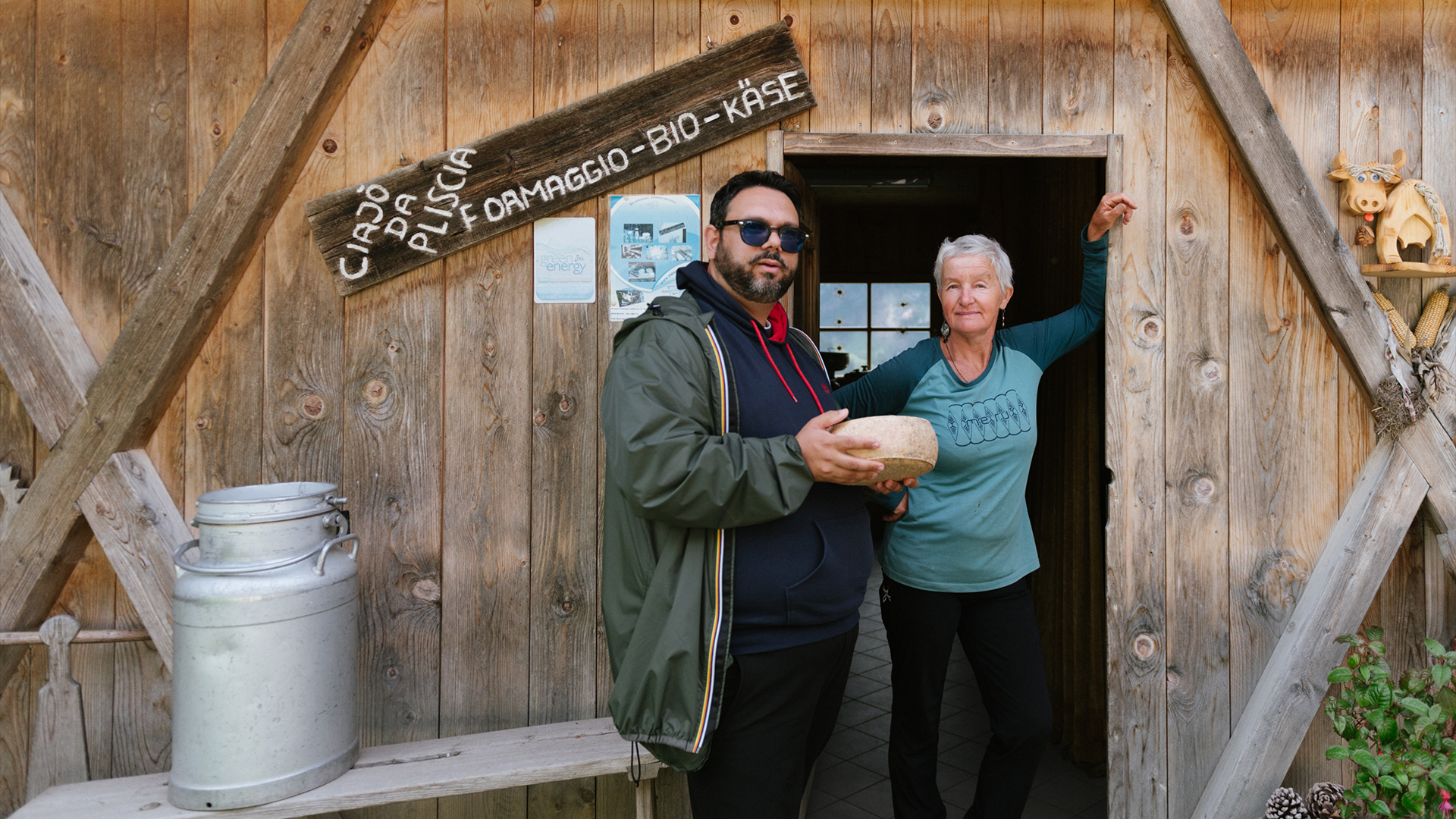

Collaborators
The company's Ethical Code commits to enhancing the skills of its human resources by providing appropriate training, professional development, and personal growth tools. La Stüa de Michil also works in this direction, valuing its collaborators in a high-level professional environment, encouraging teamwork, mutual empowerment, sharing, and educational growth.
Currently, the kitchen brigade consists of 12 collaborators, while the service team in the dining room has 8 collaborators. A great deal of attention is paid to work-life balance, and significant efforts have been made in recent years: in the dining room, there is a morning shift for table mise en place, and the remaining staff starts at 4:00 PM for a single shift. In the kitchen, there are two shifts: 9:30 AM – 1:00 PM for mise en place, with a return at 5:00 PM for service until 10:00 PM. Thanks to the excellent work environment, the entire La Stüa de Michil staff will return for the summer season in June, after the spring break.
Kitchen
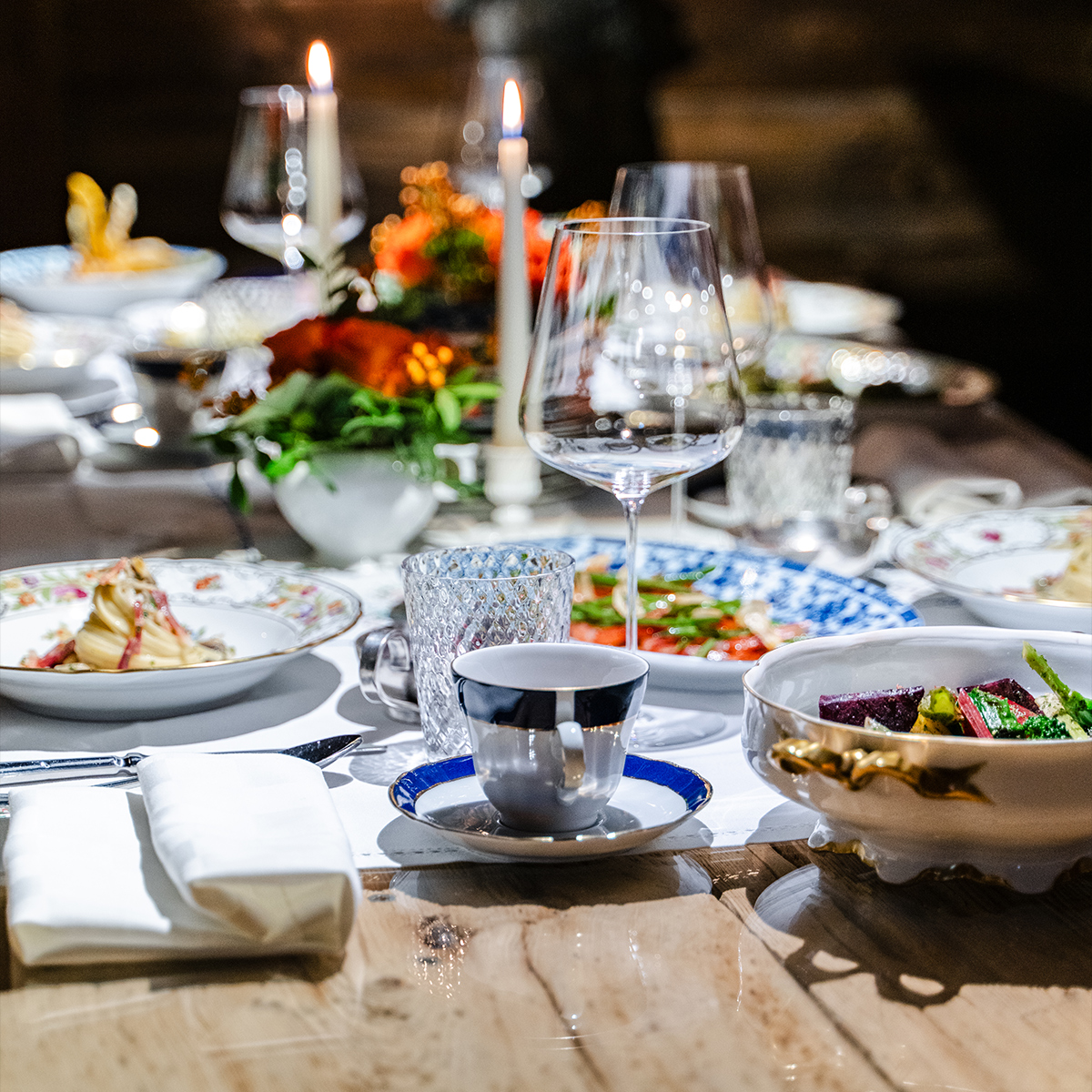

Vegetables
We have created and are supporting three specific projects for vegetable harvesting: Harald Gasser from Barbiano, Georg Trebo from San Vigilio di Marebbe, and Agostino from Calabria. So, we have three “our” gardens that complement each other in terms of timing and seasonality. Barbiano and Marebbe are located in Alto Adige-Südtirol, with their altitude and the positioning in two different areas (Barbiano: 836 m, San Vigilio di Marebbe: 1,285 m), complementing each other in terms of product production. Barbiano starts first to kick off the season, which then concludes with products from San Vigilio. From Harald and Georg, we receive many roots in the winter: Jerusalem artichokes, potatoes, beets, radishes, as well as oxalis, Chinese artichokes, and so on. With the Calabrian vegetables, Simone is able to include the Mediterranean aspect of the products in the menu: peppers, eggplants, tomatoes, zucchinis, red onions, new garlic, broccoli, cauliflower, fennel, turnip greens, and citrus fruits. Our effort is to completely avoid greenhouse vegetables, which do not follow the rhythm of the seasons and are very energy-intensive and environmentally impactful, while maintaining high quality and, at the same time, variety in the dishes.
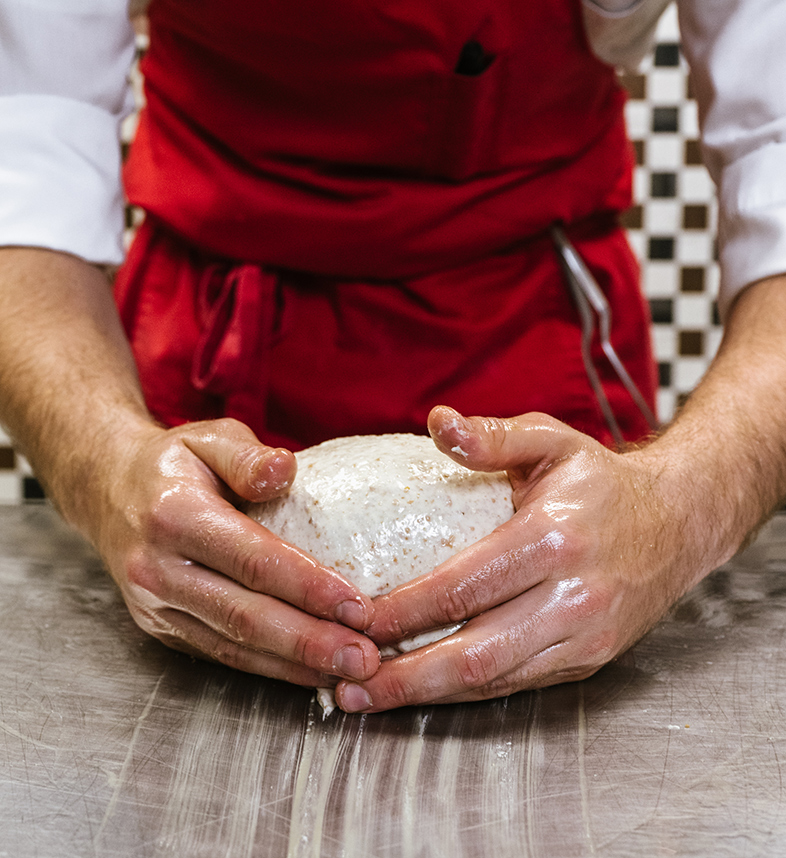
Bread and Pastry
The bread of La Stüa de Michil is a jewel of bread. A partner in the project is Günther from Val di Funes, a farmer who, together with his farmer friends from the valley, seeks to recover and restore value to the ancient local South Tyrolean grains. Due to the cyclic nature of the land, the farmers in the group change the type of grain each season: last year, in 2024, they planted buckwheat, and this year, spelt. Depending on the quality of the crops, once the grain is ready, it is milled locally, and then we begin testing the dough. At this stage, we rely on the Moderno bakery in Trento, which provides us with their facilities and technical expertise. Together, we observe the development of the bread based on the composition of the flour. Over the course of two seasons, we managed to develop two types of bread: the summer one, using corn to make it lighter, and the winter one made with spelt. For the farmers as a community, this project holds great value. Having someone like us who uses about 500 kilograms of flour a year means giving continuity and context to their daily work, work that would otherwise be in vain. The flours from this project are occasionally used for making pasta or other items, for example, in pastry. Even in pastry, the creation of menus is made with products from our farmers, representing the most delicious and indulgent image of Italian agriculture.
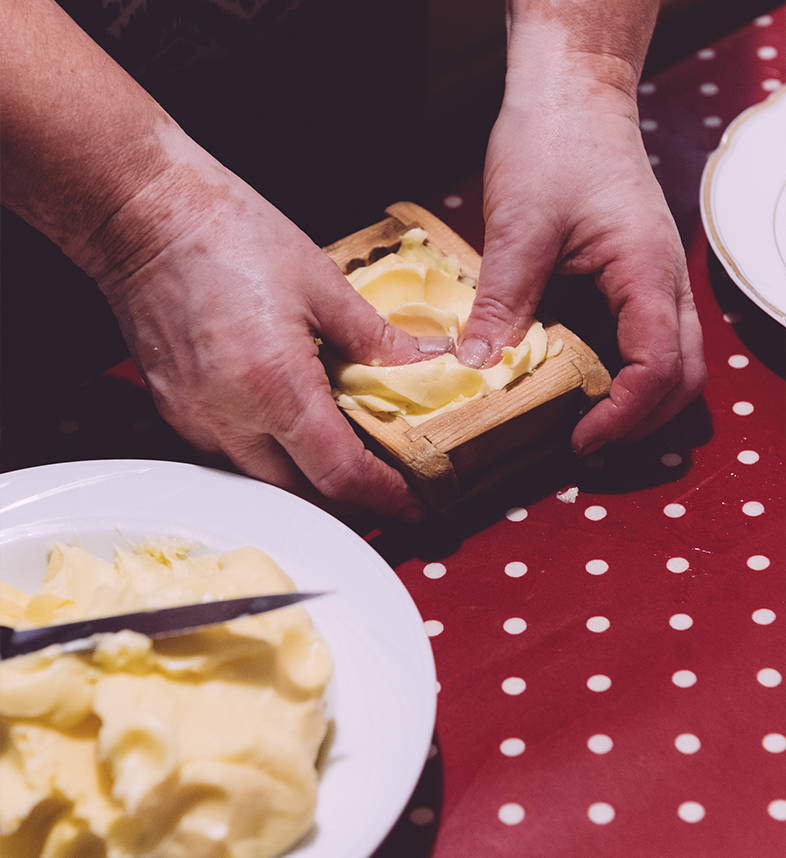
Meat and Fish
Most of the meat comes from the Pretzhof farm in the Val di Vizze and from other farmers in the Brennero/Vipiteno area. A smaller amount comes from the Maso Oriana in Longiarù – Val Badia, from La Valle at Hubert's farm, and from David's farm in San Vigilio di Marebbe, where pigs, lambs, calves, and chickens are raised. The beauty of the direct relationship with local small producers is that often recipe ideas come from the farmers themselves. One day, Uli from Pretzhof suggested to Simone to make boneless oxtail, à la Royale, like rabbit in France. Patrizia from La Pliscia, on the other hand, suggested a specialty of stewed rooster. According to Simone’s philosophy, however, the amount of meat served will continue to be reduced, taking a secondary role while bringing vegetables to the forefront as the main character. For fish, we ask our suppliers to provide only fish caught in the Mediterranean Sea with sustainable practices, and we often prefer lake or river fish to avoid further impacting the precarious situation of fishing in the seas.
Kitchen - INTERESTING FACT
Interesting fact
Pretzhof: In order to guarantee transparency in the supply chain of its own meat production, Pretzhof has created its own slaughterhouse in Vipiteno, which is also used by several other farmers in the area. The difficulty with traditional slaughterhouses, in fact, was ensuring that the animal brought for slaughter was truly the same as the processed meat returned. Additionally, their own slaughterhouse allows the animal to be treated differently, ensuring its humane dignity until the last moment of its life.
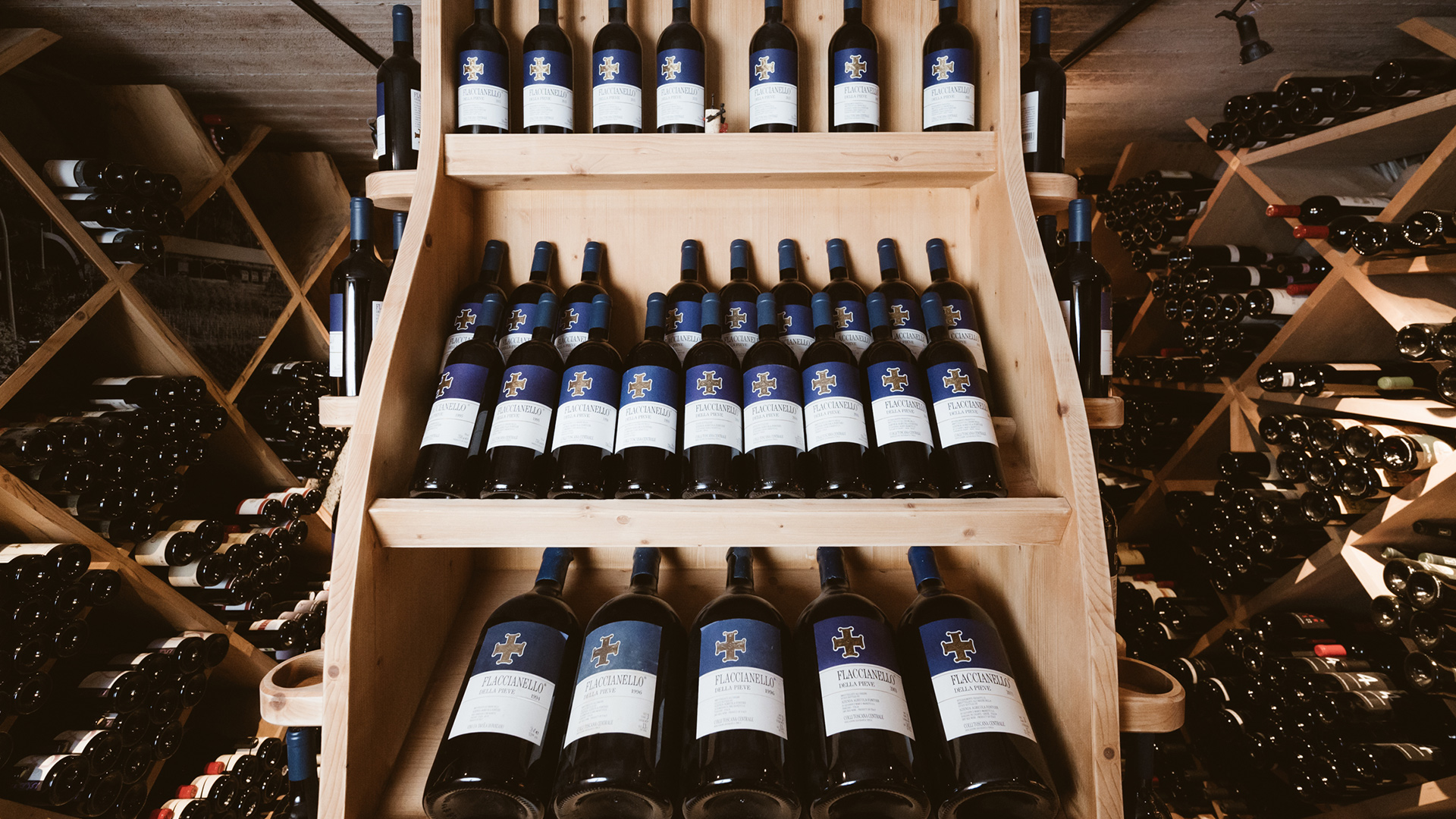
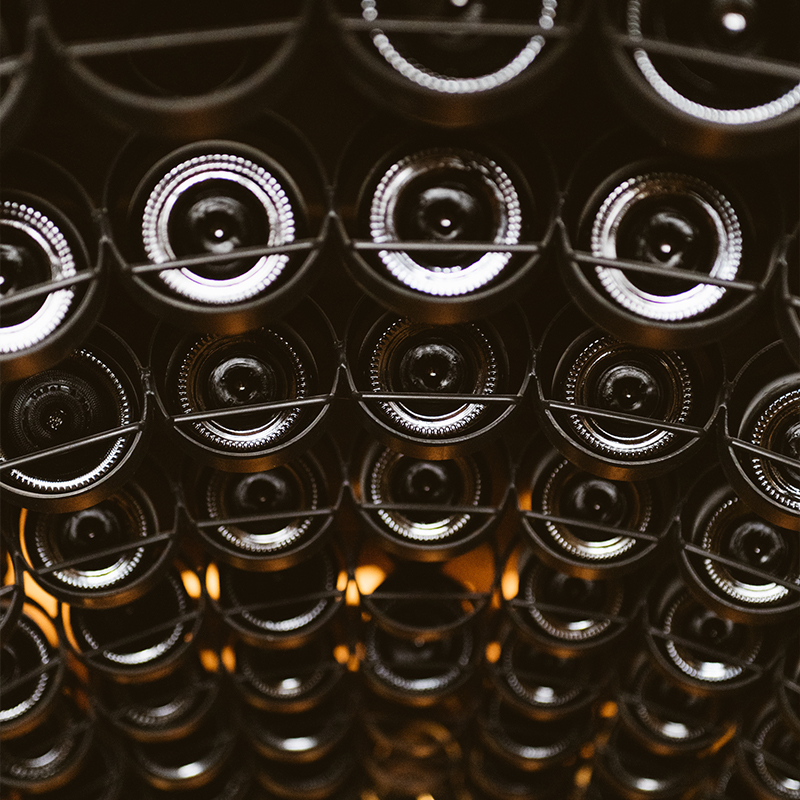
THE WINES
The wine cellar of La Stüa de Michil is particularly well-stocked with small wineries and producers, whose wines come from vineyards on similarly small plots of land between South Tyrol and the most important wine regions of Italy and France. In addition, the family-run production and management plays a central role, which, apart from ensuring transparency in the production process and quality, is also a key aspect for a sincere human connection between producer and buyer – between those who harvest the grapes and those who pour them into the guests' glasses. The ratio between small producers represented on the wine list and large companies could be described as 51 to 90.
For those who prefer a non-alcoholic beverage, we offer juices and cocktails made from selected Italian fruits.

La Stüa de Michil  is an integral part of Hotel La Perla, a facility certified by the GSTC-Global
is an integral part of Hotel La Perla, a facility certified by the GSTC-Global  Sustainable Tourism Council.
Sustainable Tourism Council.
Sustainability
At the restaurant
At the restaurant La Stüa de Michil, plastic and non-recyclable materials are not used. The tableware is carefully selected and purchased from a Tuscan company, with many other pieces being vintage. Plates, small plates, and cups are bought from flea markets or donated from family collections, revalued in the context of La Stüa de Michil and through Simone's cooking.
The embroidered tablecloths are a historic inheritance of the house, collected over time according to the philosophy of reusing and valuing what already exists.
The tables at La Stüa de Michil are few because quality requires care, and at the foundation of sustainability, there must always be quality, which is ensured by a conscious number of guests to whom we can dedicate the best attention to detail and human connection.
All vegetable scraps are reused, for example, to make salad dressing. The team works extensively with 100% vegetable sauces to reuse scraps, such as softened onions, root vegetable remnants, and so on. These sauces are then used to garnish all types of dishes, whether fish, meat, or vegetables. When vegetables are cooked at low temperatures, they release a high amount of sugar, which creates a true "umami, " providing a sensation of roundness and completeness in taste.
Naturally, bones are also used to make sauces: if the whole animal arrives, such as a kid goat, the shoulders and legs are used for stuffing various dishes, while the smaller and more delicate parts, like the saddle, are served at the "Incö" table, as the portions are small and few but precious.
Interesting fact
Interesting fact
With one kid goat, about 30 portions of fresh pasta and 4 portions of a main meat dish can be created.
